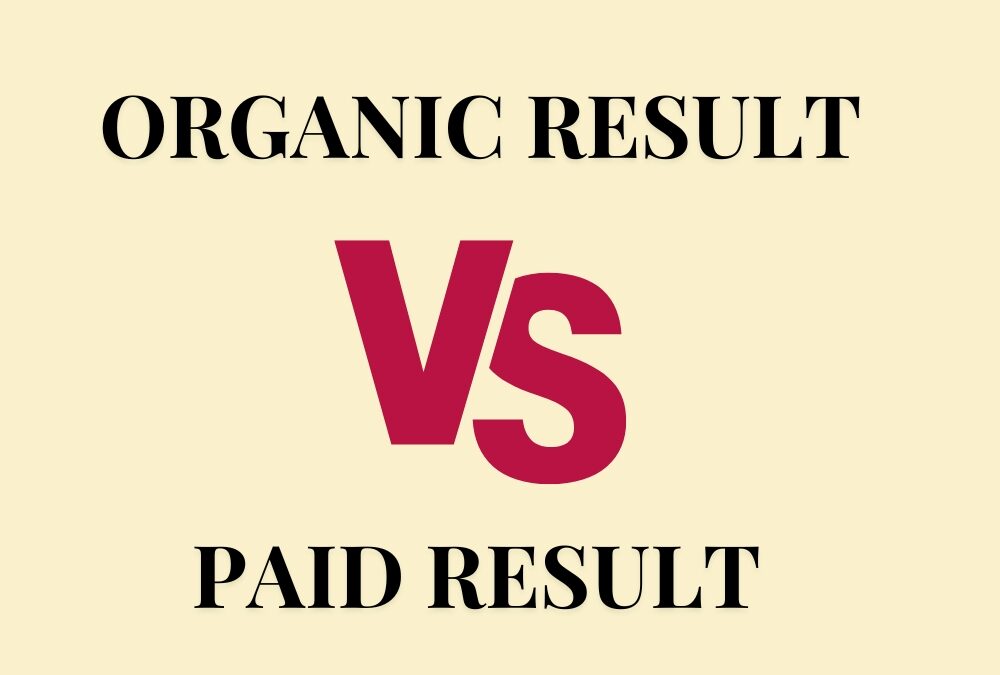Organic Result
The listing that shows up on the search engine result page (SERP) for a certain query is known as an organic search result.
Organic search is one of the best ways to increase traffic or conversions because it is free and visitors can see that you are relevant for the terms they typed in. It is ideal for building long-term, sustainable traffic and credibility. It requires consistent effort and time investment but can yield lasting results.
It is are determined by a search engine’s algorithm, which evaluates numerous factors.
Key factors of organic result include:
- Content Relevance: How well the website’s content matches the user’s search query.
- Authority and Credibility: The trustworthiness and popularity of the website.
- Performance and User Experience: Website speed, mobile-friendliness, and ease of navigation.
- Optimization: Effective use of SEO techniques.
Websites that excel in these areas are more likely to rank higher in organic search results, leading to increased visibility and traffic.
As you can see, the #1 result in Google has a 10x higher CTR compared to the #10 result.
For anyone that’s worked in the SEO field for any length of time, this finding shouldn’t come as a surprise. It’s well-known that ranking #1 is significantly more valuable than any other position.
Paid Result
Paid results in Google, also known as Google Ads or sponsored links, are advertisements that appear at the top or bottom of the search engine results page (SERP). These ads are created and paid for by businesses using Google’s advertising platform.
It is effective for achieving immediate visibility, driving targeted traffic, and generating quick leads or sales. It requires a financial investment and ongoing optimization.
Paid search in Google, also known as PPC (Pay-Per-Click) advertising, is a model where advertisers bid on keywords relevant to their business to have their ads appear in search engine results.
Key features of paid results include:
- Placement: Typically appear above organic search results, marked with a small “Ad” label.
- Targeting: Advertisers bid on specific keywords relevant to their business, ensuring their ads show up for relevant search queries.
- Cost: Advertisers pay each time a user clicks on their ad (Pay-Per-Click or PPC) or views the ad (Cost-Per-Thousand Impressions or CPM).
- Customization: Ads can be tailored with ad extensions like phone numbers, location, links to specific parts of the website, and more.
It can drive immediate traffic to a website, providing visibility and potentially higher conversion rates when effectively managed.
Conclusion:
Organic search results are achieved through SEO (Search Engine Optimization) efforts and are based on the relevance and quality of website content. The main advantages are:
- Cost-Effective: No direct cost for clicks or impressions.
- Credibility and Trust: Often perceived as more trustworthy by users.
- Long-Term Benefits: Sustained effort can lead to lasting visibility.
However, achieving high organic rankings can be time-consuming and requires ongoing optimization and content creation.
Paid Search
Paid search results, through platforms like Google Ads, involve paying for ad placement in search engine results. Key benefits include:
- Immediate Results: Quick visibility and traffic.
- Targeted Advertising: Precise targeting based on keywords, demographics, and more.
- Flexible Budgeting: Control over ad spend and scalability.
The downsides are the ongoing costs and the need for constant management to ensure cost-effectiveness and high performance.
Both organic and paid search strategies have their place in a comprehensive digital marketing plan.
Ultimately, a balanced approach, leveraging both organic and paid search, can maximize reach, traffic, and conversions, ensuring a robust online presence and optimal ROI.
NEED TO KNOW MORE ABOUT KEYWORDS IN SEO? LET’S CONNECT

